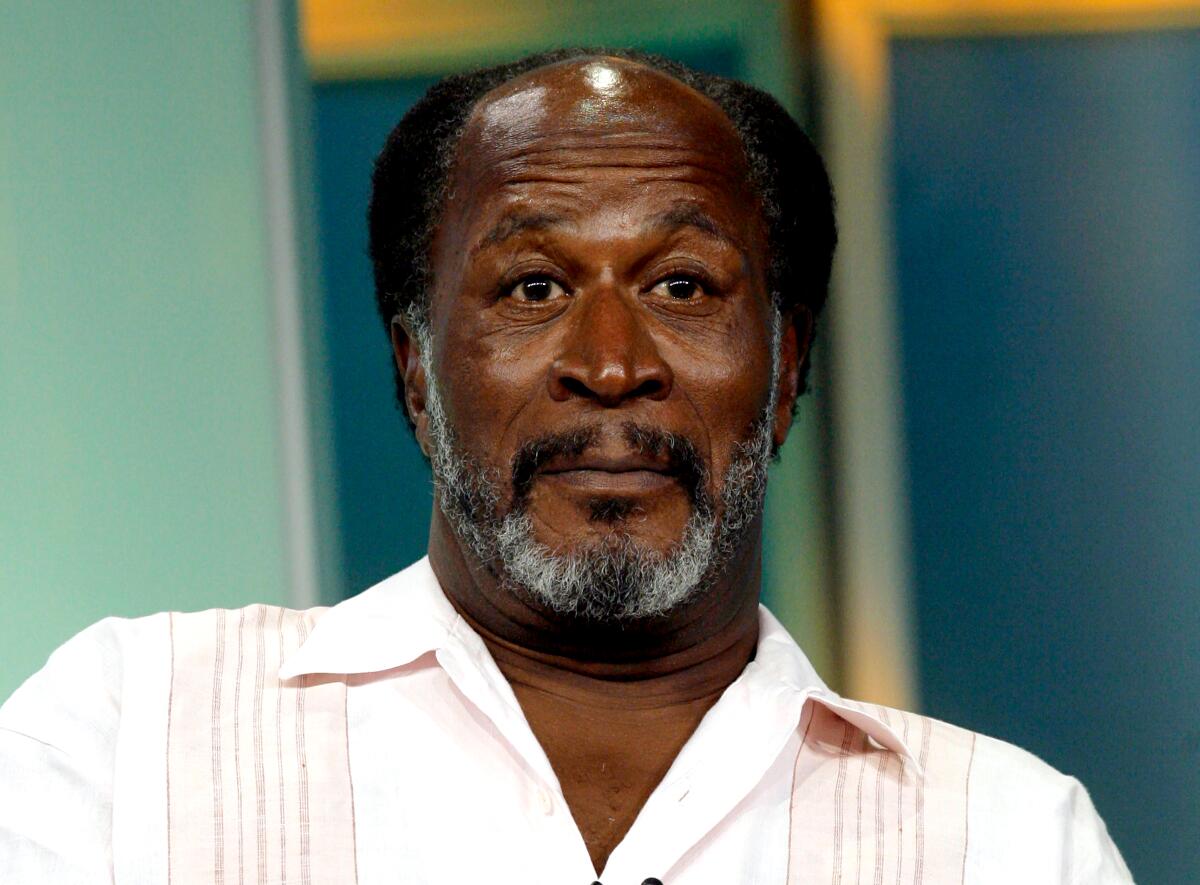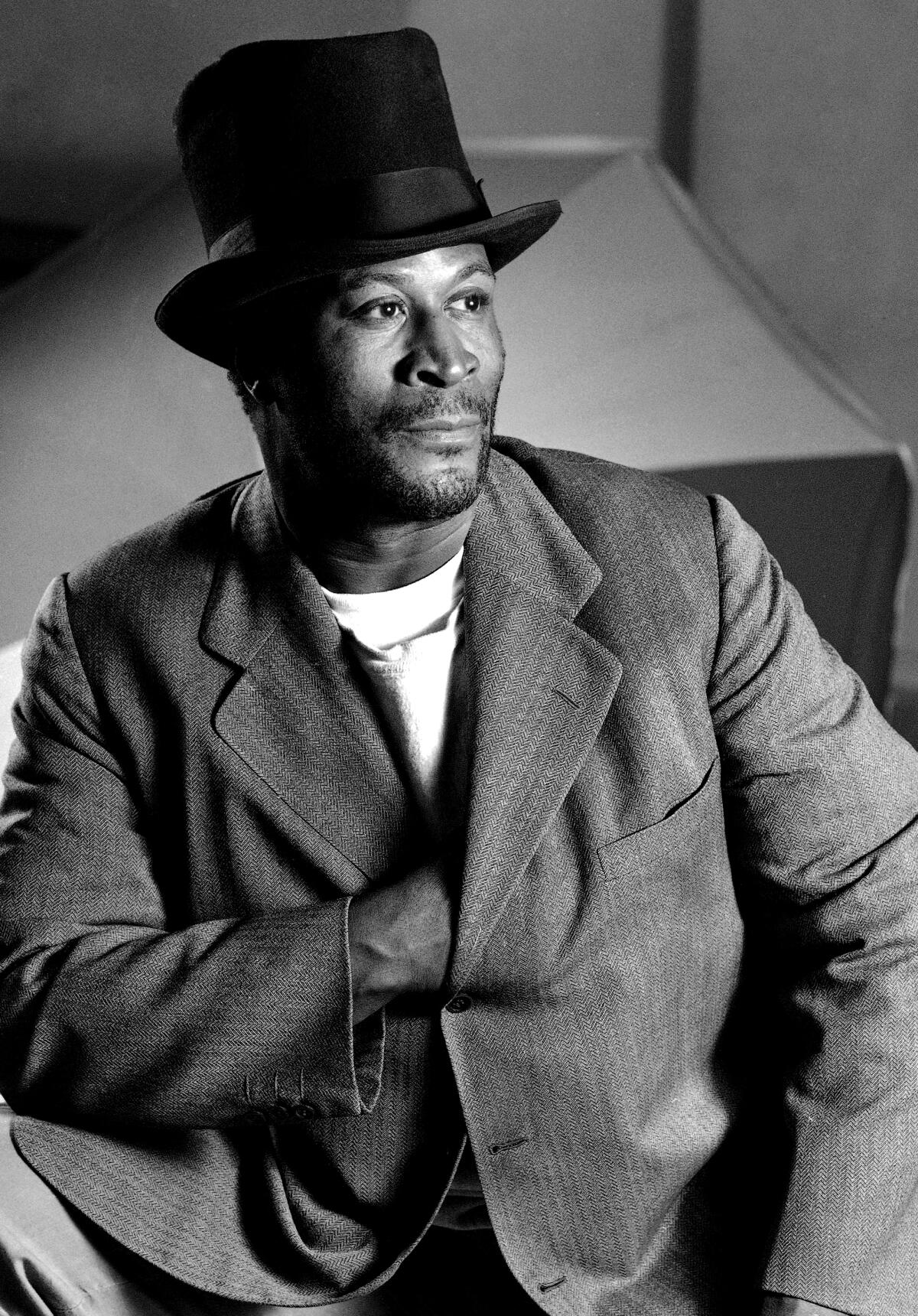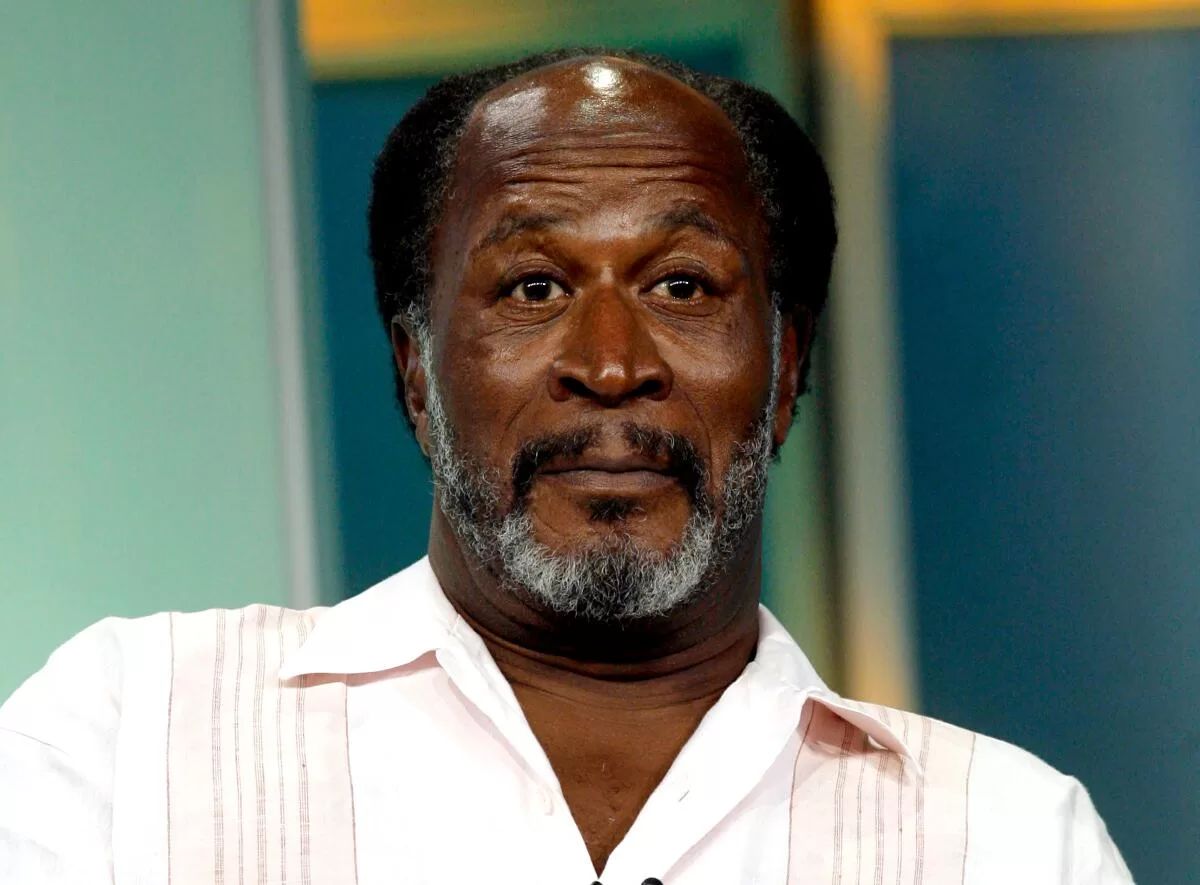There is something unusual in the fact that more than a month passed before the death of actor John Amos, 84, was announced Tuesday. But a powerful personality takes a while to come to a full stop.
A Golden Gloves champion, a college football player and a minor league football player before transitioning into entertainment — first as a Greenwich Village stand-up, then writing for Leslie Uggams’ 1969 variety show, and finally graduating to the screen — Amos was built to play authority figures (or anti-authority figures). Roles across his long, busy career have included reverend, inspector, captain, sergeant, doctor, coach, sheriff, pastor, mayor, deacon and, notably, Adm. Percy Fitzwallace, chairman of the Joint Chiefs of Staff in 22 episodes of “The West Wing,” prestige television before the letter. (When Amos met then-Secretary of State Colin Powell, Powell’s first words to him were “Percy Fitzwallace? What kind of name is that for a brother?”)
Even “Gordy the weatherman,” as many of us first knew Amos, on “The Mary Tyler Moore Show,” fit the bill. “Gordy was articulate,” Amos recalled in an interview with the Television Academy Foundation. “I liked the fact that he was a meteorologist [rather than a sportscaster] ‘cause it implies that the man could think, above X’s and O’s.” (In a running joke, he’d be mistaken for a sportscaster.)

John Amos in 2007. He was known for his roles in “The Mary Tyler Moore Show” and the “Good Times” spinoff, “Maude.”
(Nick Ut / Associated Press)
And, of course, in the part for which he is arguably best known, he played a father — not the comic dimwit whose children are all smarter than he, but a caring, responsible and strict figure where it mattered. Amos was only 34 when he was cast as James Evans, Sr., in the 1974 “Maude” spinoff “Good Times” — reflecting his innate maturity, he was 19 years younger than Esther Rolle, who played his wife. (He had played a version of the part in a few episodes of “Maude.”)
In keeping with the Norman Lear house style, loud hectic moments and fits of temper alternated with quiet, reflective, more emotional ones, like “The Honeymooners” but with comments about class and race. It demonstrated the actor’s range, but Amos began to sour on the show as he felt the focus shifting to the low comic antics of Jimmie Walker as slacker son J.J. — “Dyn-o-mite!” you might remember — and said so: “I wasn’t the most diplomatic guy in those days,” he said in the same Academy interview. Eventually the writers “got tired of having their lives threatened over jokes” and, after the third season, Lear let him go. James died offscreen.
But “Roots” was around the corner; as the older version of LeVar Burton’s Kunta Kinte, it was a part for the history books, and opened the door to dramatic parts.
Because of the time in which he was born, it fell to Amos to be something of a pioneer. He was one of a few Black students to integrate his New Jersey elementary and middle school, where he was asked if he had a tail. He married his first wife, Noel J. Mickelson, the mother of his two children, who was white, in 1965, two years ahead of the Loving vs. Virginia decision, in which the Supreme Court struck down laws against interracial marriage. And he got started as an actor in a time when substantial parts for Black actors were harder to come by, and the idea of colorblind casting was a thing of the far the future.

John Amos in 1989, when he starred in “Twelfth Night” at New York’s Central Park Theater.
(Rene Perez / Associated Press)
The stage, meanwhile, allowed him to perform the works of Athol Fugard (“ ‘Master Harold’ … and the Boys” in Detroit), Eugene O’Neill (a tour of “The Emperor Jones” in the part created by Paul Robeson), August Wilson (“Fences” in Albany) and Shakespeare (Sir Toby Belch in a 1989 production of “Twelfth Night” for Joseph Papp’s Shakespeare in the Park, alongside Andre Braugher, LisaGay Hamilton, Michelle Pfeiffer and Gregory Hines). In 1990, he created his own one-man show, “Halley’s Comet,” in which he played a man looking back across the century, and which he toured as recently as 2017.
Between the peaks, his career traces the familiar shape of an actor going where the work goes, including a reunion with Norman Lear on the short-lived “704 Hauser,” about a Black family moving into Archie Bunker’s old home; a recurring parts on the UPN Debbie Allen-LL Cool J sitcom, “In the House” and the CBS crime drama “The District”; and the NBC crime drama “Hunter.” There were many, many guest shots on “The Love Boat” and “The A-Team,” to “30 Rock” and “The Righteous Gemstones.” On the big screen, among many forgotten films, were well-remembered turns in Eddie Murphy’s “Coming to America” and an appearance as himself in Josh and Benny Safdie’s “Uncut Gems.”
TV is where he mattered most. Perhaps my favorite Amos role was as bush pilot Buzz Washington in the 2006 Alaska-set Anne Heche comedy “Men in Trees.” Married for 10 years to mail-order bride Mai (Lauren Tom), who could be a handful, it emphasized the gentleness that underlied his best roles; he could be a calming presence onscreen. Powerful people don’t need to shout to be heard, and are all the more powerful for it.
